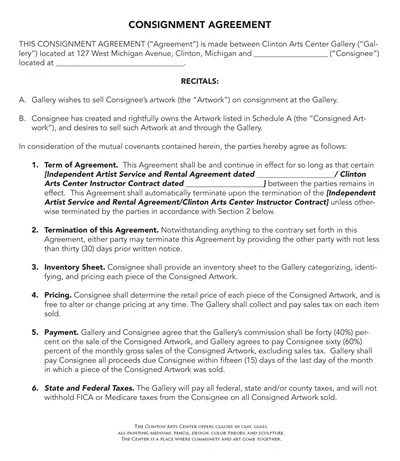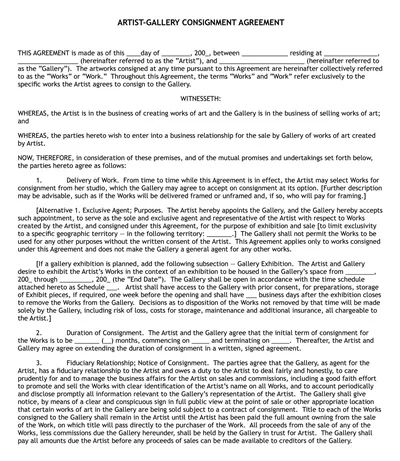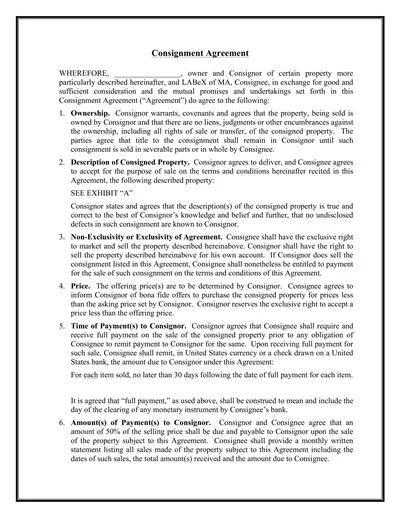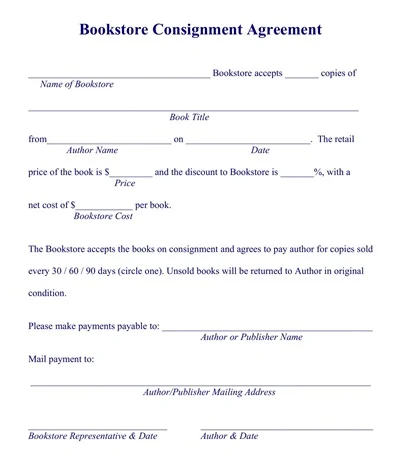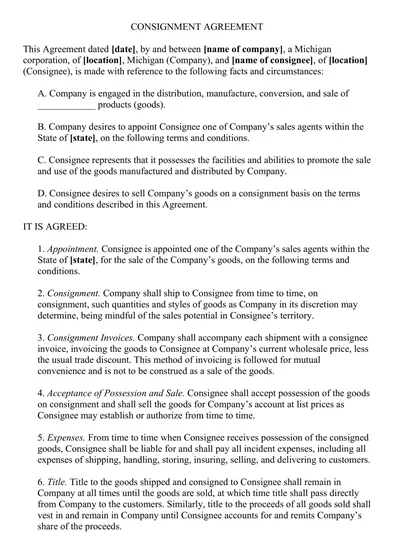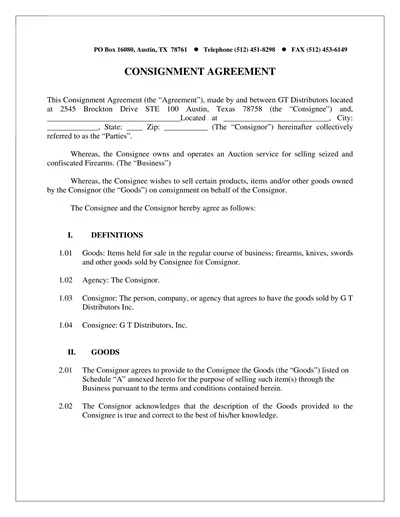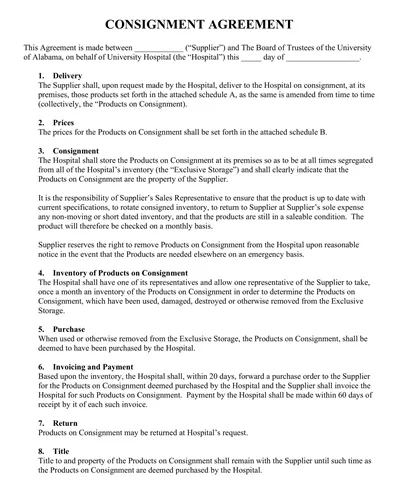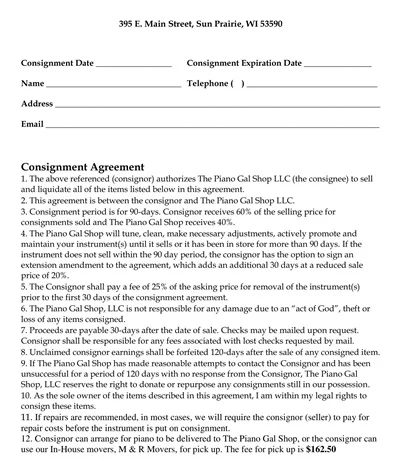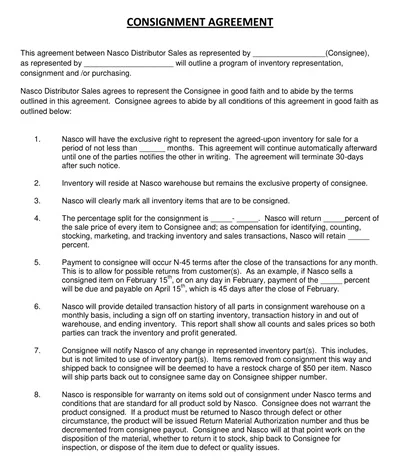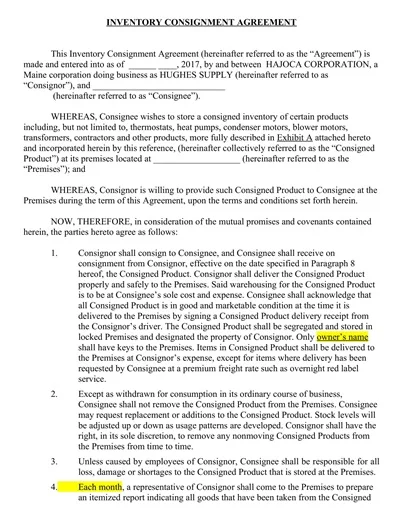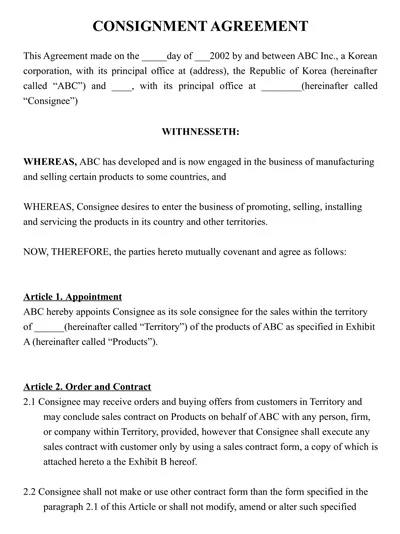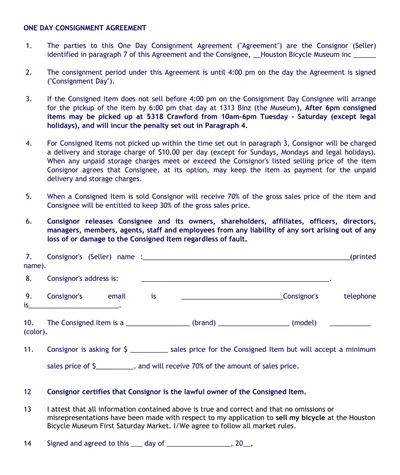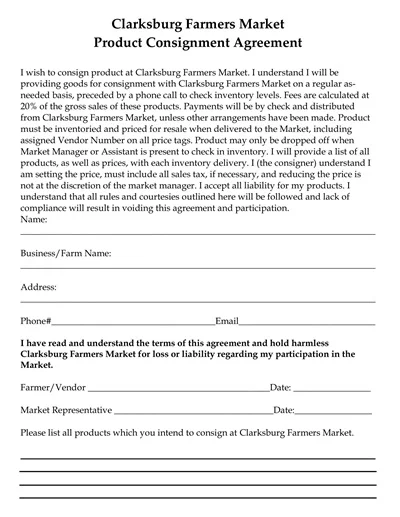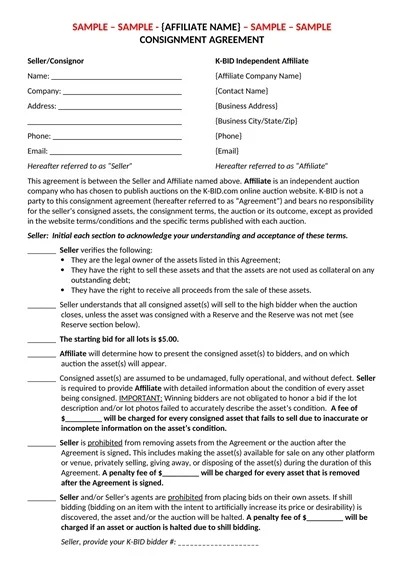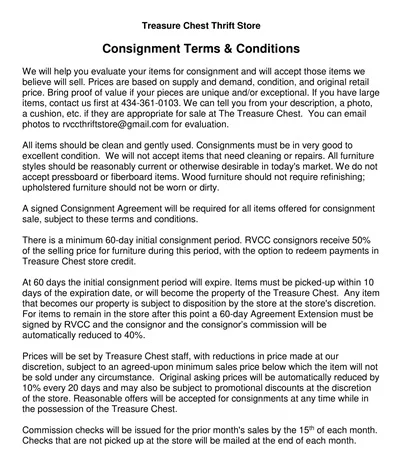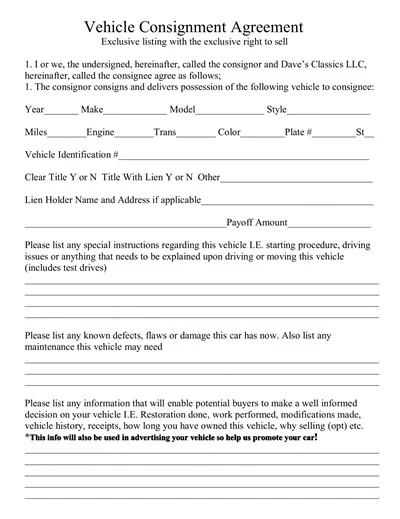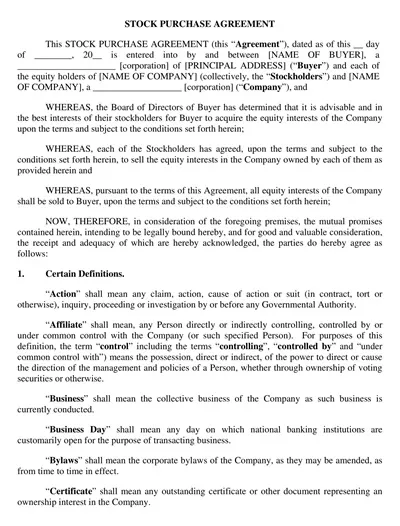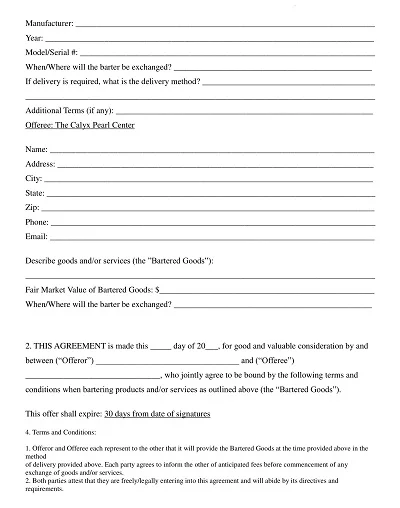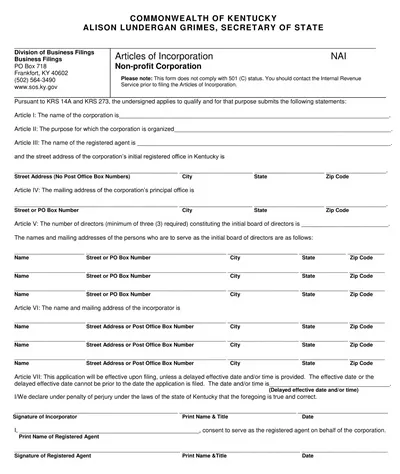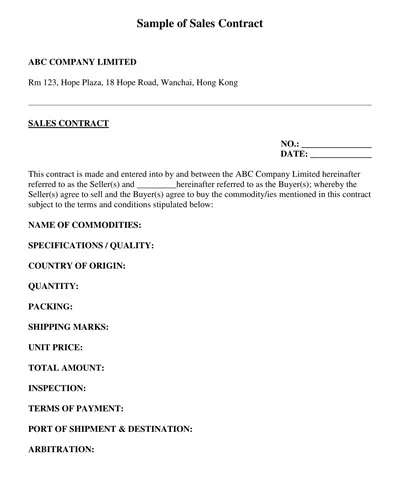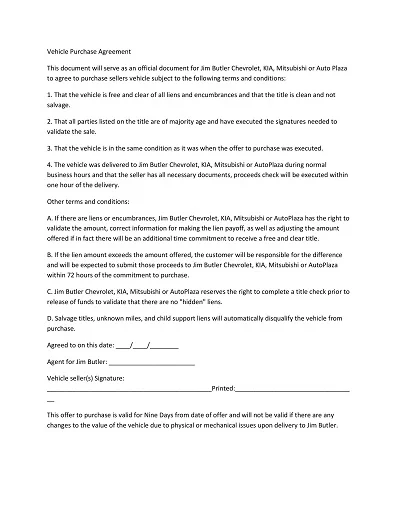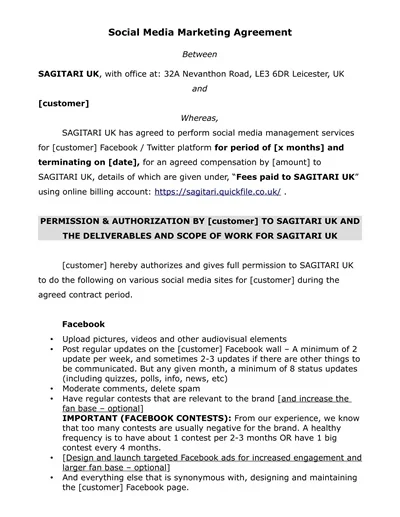A consignment agreement form is simply the typical notice of an intended agreement between a certain consigner and the one who takes some goods to the former for scanning. This framework can be used as an agreement whereby a consignor always retains ownership of goods in his possession until they are sold. A consignee is willing to sell the goods for the consignor’s account.
Other essential aspects that relate to a consignment agreement include the description of the goods to be under the consignment agreement, terms of consignment, price, payment conditions, responsibilities of the involved parties, and how the items under consignment are to be reclaimed. The Consignment Agreement Template ensures that there will be no misunderstandings and that the interests of both parties will be protected during the conduction of commercial operations.
Simple Consignment Agreement Templates
What is a Consignment Agreement?
The Consignee in this type of contract is the owner of the merchandise or products, referred to as the consignor, who negotiates with another party known as the consignee to sell such products to the public on his behalf. This agreement entails bearing the responsibility of not buying the goods prior but undertaking trade on the consignor’s behalf.
A consigner holds legal ownership over the goods until the sale, where the consigner gets a commission or fee from the sale proceeds of the merchandise. This is advantageous to the consignor in that it enables them to expand their market niche in a way that they do not need physical shops or stores developed, and it benefits the consignee in the sense that he or she may not have had the capital to purchase inventory and merchandise, but now gets customers.
What to include in a Consignment Agreement?
Here are some key elements that should be included in a consignment agreement:
- Parties Involved: By law, the name of the person shipping the goods and the name of the person selling the goods on behalf of the true owner must be provided when leading every ship.
- Description of Goods: In addition, the consigned items should be described in terms of whether they are in large amounts, of high quality, or of value, along with the type of identification used.
- Pricing and Payment Terms: Externalise the pricing of the consigned products now on the supply side and the relations between the consignor and consignee regarding payments.
- Duration of Agreement: Indicate the validity of the consignment agreement, the date of agreement, and the date when the agreement ceases.
- Responsibilities of Consignor and Consignee: Describe everyone’s roles and obligations charitably, who is expected to take products to the ships where the products are to be kept, and who will be charged with insurance for the items.
- Sales and Marketing: Additionally, the strategy should explain how the goods will be marketed and put up for sale, whether the firm has any advertising responsibilities, and whether it has a specific promotion strategy.
- Commission and Fees: State the amount of commission that shall be charged and any other possible charges that a consignee may include.
- Inventory Management: Proscribe policies that imply expectations regarding how inventory should be checked or monitored and how unsold products should be returned.
- Termination Conditions: Discuss the circumstance under which either of the parties to the consignment agreement can opt to quit the contract.
- Dispute Resolution: Include a remark on how each party will resolve a dispute by engaging the services of a dispute resolution service, by the court, or through an arbitrator.
- Signatures: Standard: Add trademark of approval and the date by the representative of the sender and the recipient of the goods.
Benefits of Using a Consignment Agreement
Obviously, the consignment selling arrangement is beneficial for the sellers and buyers in ways that are highlighted below. Here are some of the most significant advantages of using a consignment agreement:
1. Risk Mitigation
Like every term document, a consignment agreement offers several benefits, the most incomparable of which is greatly minimizing the risk of the sale of the particular commodity. For the consignor, the risk of holding unsold stock is eliminated, as the tender of title to any goods remains with the consignor until an agreement of sale is affected.
However, for the consignee, this means that there is no need to invest working capital to purchase stocks, thus minimizing the exposure to risks that may be faced financially.
2. Inventory Management
It has been established that strategic performance measurement systems can enhance inventory management through a more favorable consignment agreement. From one’s perspective, one can get several choices of a certain product without ordering the bulk.
This flexibility can help businesses match market demands and trends; all this is done efficiently and effectively, thus avoiding the need to hold high inventories, which wastes space.
3. Market Testing
A consignment agreement is wholesome because it brings about the right marketing chance. Conversely, new products can come into the market and be introduced without the need for a lot of money.
The feedback can be useful in assessing future purchasing habits or in correcting the product before its wide release.
4. Increased Sales Opportunities
Suppliers have many choices when consigning to different retailers, which means they have many distribution opportunities, such as establishing sales in different channels and being available often.
The advantage of selling to a huge number of customers through a distribution network is that the number of sales, marketing, and market coverage is enhanced.
5. Strengthened Business Relationships
A consignment agreement supports the business relationship, working harmoniously to achieve the goals of the concerned parties, the consignor and the consignee.
The Best Partnership also means that the relationship between Garmar and its partners evolves into more detailed cooperation and a common focus on all types of communication, leading to a mutual understanding, the foundation of trust, and long-term business that will add value for both partners.
Tips for Negotiating Consignment Agreements
Here are some tips to keep in mind when negotiating consignment agreements:
- Understand the Terms: Always ensure that you have carefully gone through the following provisions of the consignment agreement. Expand the details of each aspect you are going to embark on, including the prices to be offered, the time frame of the consignment, and other roles and responsibilities that both parties are going to perform.
- Set Clear Expectations: Determine the context that requires the items to perform their function and be stored. This ensures that the value and saleability of products you intend to sell are retained in the process.
- Payment Terms: Both partners signing the bill should be clear about who will be responsible for paying the bill. The fourth one regards the timing and conditions of payment and reimbursement: decide the preferable time, whether immediately after the sale or at a randomly chosen time.
- Inventory Management: Formulate measures that strengthen managers’ responsibility for inventory. This includes where it is usually bought, who is in charge of the order process, the status of these stocks, and who does counting and variance accounts.
- Insurance and Liability: One might also decide to stand and say that he or she doesn’t need insurance coverage. Ensure that your items cannot be spoiled, stolen, or lost while in the hands of the consignee.
- Termination Clauses: Enumerate the situations and scenarios that are likely to warrant the early contract termination by either of the two parties. As much as there may be grounds for dissolving the agreement, there should be specific conditions regarding the returns of your items.
- Marketing and Promotion: Determine if the consignee is agreeable to participating in marketing promotions of your products. Try to elaborate on what would need to be marketed, targeted, and advertised and/or compared to what any resistant form of marketing would cost.
- Dispute Resolution: Extend one that creates the shared principles that govern arbitration in case of a dispute. This could entail approaching a third party, such as a lawyer, to agree, such as mediation or arbitration, instead of going to a lawsuit.
- Flexibility and Amendments: Provisions in the agreement that allow for additions or modifications of other terms are also needed so that future adjustments can be made. They agree on how changes will be made to the contract, if any, will be required during its implementation.
Importance of Consignment Agreements
Consignment contracts are crucial and indispensable in sales and distribution. They outline the conditions under which the goods are to be cleared from the consignor to the consignee; the consignee is entrusted with the duty of selling the items on behalf of the consignor.
This is in contrast with other methods of sales where the consignee is not expected to incur any costs since the consignment agreements protect the consignor against risks of costs. This ensures that sellers can bring a broader variety of goods to the market, which does not demand much capital. For the consignor, these agreements mean the enlargement of the market area and, consequently, public visibility of the product, which could enhance sales.
In addition, consignment agreements are useful because they establish a proper business relationship between the two companies, the consignor and the consignee. As a result, they are able to manage the demanded products efficiently and enhance the achievement of increased profit.
Common Mistakes to Avoid in Consignment Agreements
There are basic fundamental principles of consignment, which are the guidelines that a consignor and a consignee should be aware of when going into these agreements.
1. Inadequacy of Terms and Conditions
This consequently leads to the satisfaction of one of the fundamental principles of a consignment agreement, which is transparency. Due to this, the meaning of the agreed contents is unclear, which can lead to disputes or litigation cases. Keep a tab on how you will structure the relationship, how and when you will get paid, pricing your products, and what you will do with any leftovers.
2. Inadequate Inventory Management
Stock regulation is another important element of the legal protection of a supply chain member, especially given that a consignment relationship prevails in the supply chain. Inconsistencies in reporting on consigned items and their conditions and quantities cause loss and short-count issues. Make it a point to keep informative records in the inventory control systems and perform physical inventory counts at least once a year.
3. Insufficient Insurance Coverage
Another key weakness is the lack of clarity in defining these insurance responsibilities. The insurance costs should be known by both the spender and the consignee to determine who has to pay for the specific insurance required to safeguard consigned goods from being lost, stolen, or damaged.
4. Poor Communication
It is imperative that the consignors and the consignees establish effective means of communicating. Lack of consistent communication creates gaps in the workplace, as well as misconceptions and stagnation. Agree on which frequency would be ideal, one which may be a weekly or a monthly meeting to go over the pitfalls in relation to sales and stock, among other issues.
5. Overlooking Termination Clauses
Another common mistake is the failure to detail procedures for ending the employee relationship. Illustrate specifically when the agreement may be dissolved, how long the notice can be given, and the return policy for unsold products. It also offers an opportunity for any of the partners to pull out from the partnership in the event that a partnership strands sour.
How to Make a Consignment Agreement Template
In developing the consignment agreement template, several steps are considered essential in achieving the greatest possible comprehensive coverage in relation to the subjects necessary for its creation and to protect the interests of the parties involved. Here’s a simple guide on how to draft a comprehensive consignment agreement template:
- Title and Introduction: You should label the document with a title or title line that reads something like “Consignment Agreement.” After the title, the party entering into the agreement or the consent should be outlined, including the “Consignor,” the owner of the goods, and the “Consignee ‘selling the goods.
- Definitions: Specify the meaning of any term used throughout the agreement that may confuse a legal angle. These common terms may be: “Goods,” “Selling Price,” “Commission,” etc.
- Description of Goods: Insert a section where the hirer describes the goods to be consigned with particulars such as quantity and quality of the consignment and any distinguishing marks that the consignment may have.
- Term and Termination: Specify the number of years for which you agree to consign your works and under what circumstances the agreement can be terminated by either of the parties.
- Pricing and Payment Terms: Ratio of price to be charged for the goods, commission to be paid to the consignee, and how he or she will be paid. Also, state the mode of payment and the formula by which the payments will be made.
- Responsibilities of the Consignee: Enumerate the consignee’s obligations, including its obligation to store the goods properly, insure them, and attempt to secure buyers for the goods.
- Title and Risk of Loss: Specify payment terms under which title and risk of loss transfers from the consignor to the consignee in clear terms.
- Reporting and Inspection: Introduce sales reporting schedule by the consignee and authorize the right to inspect the goods sold.
- Indemnification and Liability: While drafting the agreement, ensure that there are indemnity clauses in case of lawsuits and clauses that limit liability so that you and the investor are well covered.
- Miscellaneous: Finally, the agreement may include additional provisions relating to the governing law and the place of the seat for the arbitration or litigation in the event any dispute arises, amendments, and other conditions that may be deemed relevant.
Here follows a typical consignment agreement template that will make the process of making consignment agreements easy and efficient for the two parties involved, the consignor and consignee.

